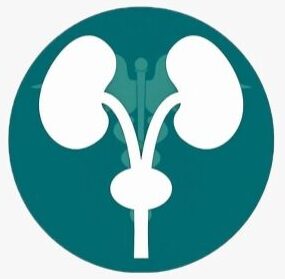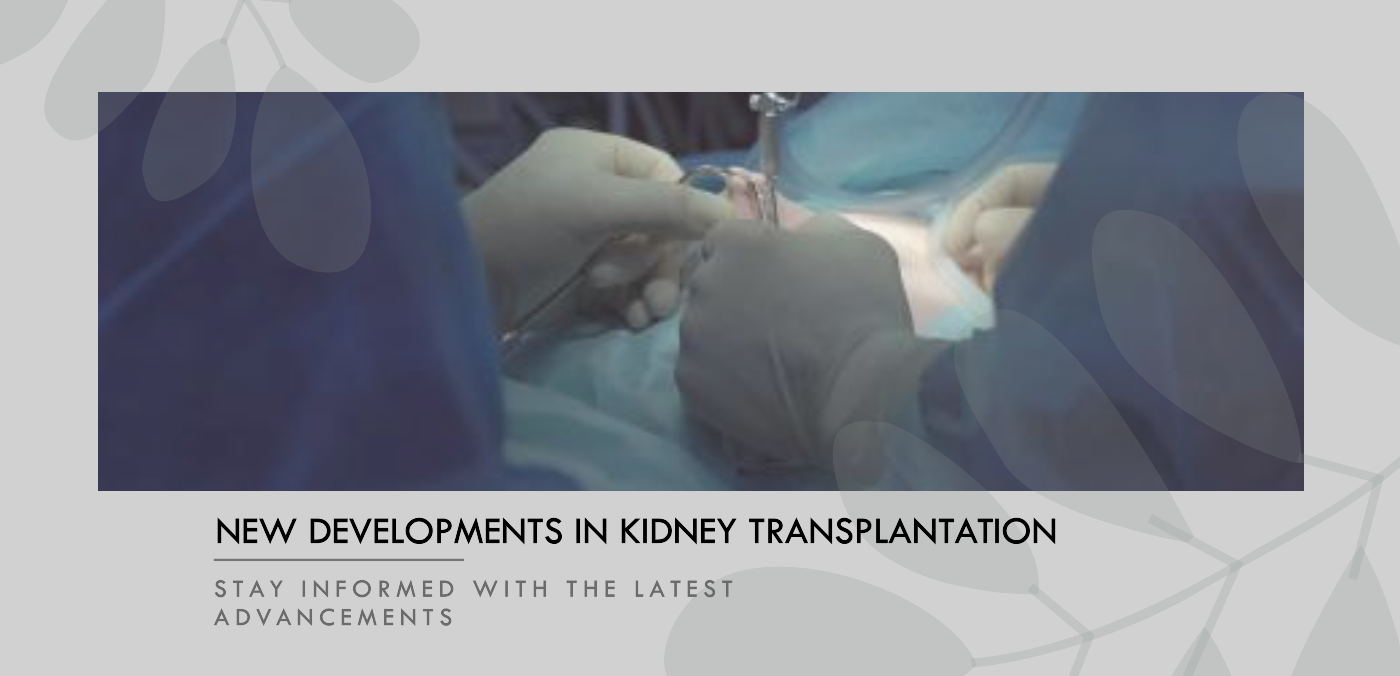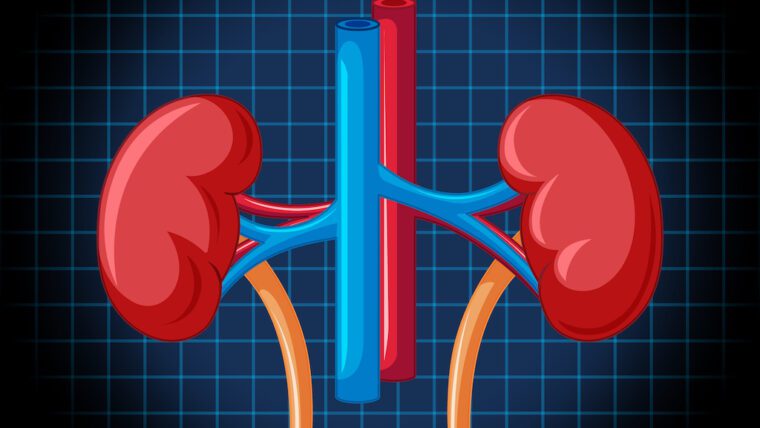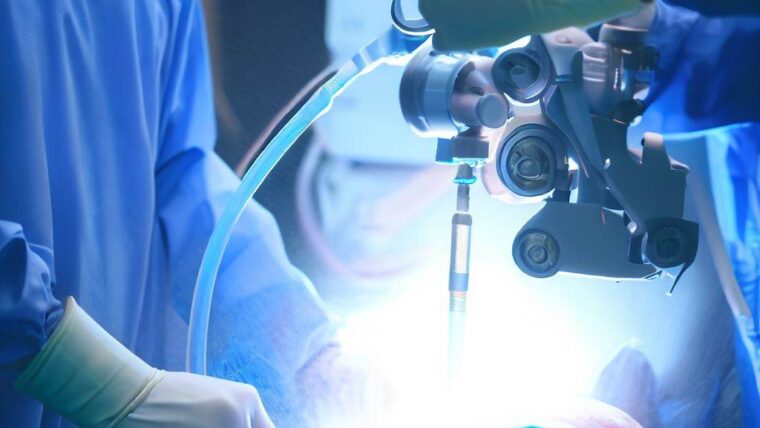Kidney transplantation has been a life-saving procedure for countless patients suffering from end-stage renal disease. Over the years, remarkable advancements in medical science have paved the way for exciting new developments in kidney transplantation. These breakthroughs hold the promise of a brighter future for patients, offering improved success rates, reduced complications, and potential alternatives to traditional transplant procedures.
In this comprehensive article, we will explore the latest innovations in kidney transplantation, discuss the potential benefits they offer, and address essential FAQs related to this life-changing procedure.
What Is Kidney Transplantation and How Does It Work?
Kidney transplantation is a life-saving surgical procedure that offers hope and a new lease on life for patients with end-stage renal disease. It involves the removal of a healthy kidney from a living or deceased donor and its transplantation into a recipient with kidney failure. The surgical team carefully places the new kidney into the lower abdomen and connects it to the recipient’s blood vessels and urinary tract. The transplanted kidney begins functioning, filtering waste and excess fluids from the blood, and producing urine.
This procedure is a highly complex and coordinated effort between surgeons, nurses, and other medical professionals. After the transplant, patients need to take immunosuppressive medications to prevent their immune system from attacking the new kidney and to ensure a successful long-term outcome.
Recent Breakthroughs in Kidney Transplant Compatibility
Advancements in kidney transplant compatibility have significantly improved the success rates and long-term outcomes of kidney transplants. Tissue typing and cross-matching techniques have become more precise and sophisticated, allowing for a better match between the donor and recipient. This has resulted in a reduced risk of organ rejection and has led to higher graft survival rates.
Furthermore, the development of virtual cross-matching has revolutionized the process of organ allocation. Using computational algorithms, virtual cross-matching predicts compatibility between donors and recipients, enabling quicker and more accurate organ matching. As a result, patients can receive transplants faster, and more lives are saved.
The Emergence of Regenerative Medicine in Kidney Transplants
Regenerative medicine holds enormous potential in transforming the field of kidney transplantation. Researchers are exploring the use of stem cells to repair and regenerate damaged kidney tissues. By introducing stem cells into the affected kidney, these specialized cells have the potential to differentiate into kidney-specific cells, promoting tissue repair and improving kidney function. While still in the early stages of research, this approach shows promise in reducing the demand for traditional organ transplants and providing alternative treatment options for patients with kidney disease.
Combining regenerative medicine with kidney transplantation could enhance the graft’s survival and reduce the need for immunosuppressive medications, resulting in improved long-term outcomes for transplant recipients. As research in this field progresses, regenerative medicine may offer a revolutionary solution for kidney failure patients, providing hope for a brighter future.
Minimally Invasive Techniques: Laparoscopic Kidney Transplantation
Minimally invasive laparoscopic kidney transplantation has emerged as a game-changing technique in the field of kidney transplantation. Unlike traditional open surgery, which involves a large incision, laparoscopic transplantation utilizes small incisions through which a laparoscope and specialized surgical instruments are inserted. The laparoscope provides real-time images of the surgical site, enabling the surgeon to perform the transplant with enhanced precision.
This innovative approach offers numerous benefits to patients, including reduced postoperative pain, shorter hospital stays, and faster recovery times. Patients undergoing laparoscopic kidney transplantation experience minimal scarring, improved cosmetic outcomes, and a quicker return to their normal daily activities. Additionally, the reduced trauma to surrounding tissues results in decreased blood loss during surgery.
Preserving Kidneys for Transplant: Hypothermic Machine Perfusion
Preserving donor kidneys in optimal condition before transplantation is crucial to ensure the success of the procedure. Hypothermic machine perfusion is a pioneering technique that has significantly improved kidney preservation and transplantation outcomes. During hypothermic machine perfusion, the donor kidney is placed in a special preservation solution and cooled to a lower temperature. The kidney is then connected to a machine that continuously perfuses it with the preservation solution, mimicking the organ’s natural environment and maintaining its viability.
This method has revolutionized the field of kidney transplantation by extending the time the kidney can be safely stored outside the body, providing a window for more extensive testing and assessment of the organ’s health before transplantation.
Hypothermic machine perfusion has been particularly beneficial for kidneys from deceased donors, as it allows for better evaluation of the organ’s suitability for transplantation, leading to higher graft survival rates. By optimizing organ preservation and reducing the risk of damage during transportation, this technique has increased the pool of viable donor kidneys and provided hope for patients on the transplant waiting list.
Bioengineering Kidneys: A Potential Future Solution?
The potential of bioengineering kidneys offers a glimpse into an exciting future where organ shortages may become a thing of the past. Scientists are exploring innovative methods to construct artificial kidneys that can be customized to match the recipient’s immune system and physiological needs. Although still in its early stages, this cutting-edge technology holds tremendous promise in overcoming the challenges of donor organ scarcity.
One approach in bioengineering kidneys involves utilizing a patient’s own cells to grow a personalized kidney scaffold, which is then seeded with stem cells to develop a functional organ. Alternatively, 3D printing technology is being investigated to construct a kidney layer by layer, incorporating living cells to ensure proper functionality.
If successful, bioengineered kidneys could revolutionize the field of transplantation by eliminating the need for immunosuppressive medications and minimizing the risk of organ rejection. Patients would have access to a limitless supply of compatible organs, significantly reducing the waiting time for transplantation and improving the long-term outcomes for those in need of a kidney transplant. However, considerable research and regulatory approval are still required before bioengineered kidneys become a standard treatment option.
Immunomodulation Therapies: Improving Long-Term Transplant Success
Immunomodulation therapies represent a promising avenue for improving the long-term success of kidney transplants while minimizing the use of immunosuppressive medications. These therapies aim to regulate the immune response more precisely, reducing the risk of organ rejection and related complications.
Traditional immunosuppressive medications suppress the immune system broadly, leaving the patient susceptible to infections and other side effects. Immunomodulation, on the other hand, involves targeted manipulation of specific components of the immune system. One approach uses antibodies to block or deplete certain immune cells responsible for rejection, allowing for a more tailored and controlled approach to immune regulation.
By adopting immunomodulation therapies, transplant recipients may experience better graft survival rates and reduced dependence on immunosuppressive drugs. This can lead to improved long-term kidney function and an enhanced quality of life for patients after transplantation. As ongoing research uncovers new insights into the immune system and its responses to transplants, immunomodulation therapies hold the potential to transform the future of kidney transplantation.
Addressing Organ Shortages: The Role of Living Donor Kidney Transplants
The demand for kidney transplants far exceeds the number of available deceased donor organs. Living donor kidney transplantation has emerged as a vital strategy to address this organ shortage crisis. In this procedure, a healthy individual, typically a family member or close friend, voluntarily donates one of their kidneys to a person in need of a transplant.
Living donor kidney transplants offer several advantages. They typically have better long-term outcomes compared to deceased donor transplants. The living donor kidney can be transplanted immediately, reducing the waiting time for the recipient and preventing the deterioration of their health while on the transplant list. Additionally, living donor kidneys are often healthier, as they come from a donor who is not suffering from severe illness or trauma.
To ensure the safety and well-being of living donors, extensive medical evaluations and counseling are conducted to assess their suitability for donation. The transplant process is carefully coordinated to protect the interests and health of both the donor and the recipient.
ABO-Incompatible Kidney Transplants: Breaking Barriers in Compatibility
ABO blood group incompatibility has long been considered a barrier to successful kidney transplantation. In conventional transplantation, the donor’s and recipient’s blood groups must be compatible to avoid rejection of the transplanted kidney. However, recent breakthroughs in ABO-incompatible kidney transplants have provided a viable solution for patients who previously faced limited transplant options.
In ABO-incompatible kidney transplantation, the recipient receives a kidney from a donor with a different blood group. To make this procedure successful, medical professionals employ a desensitization process, which involves reducing the recipient’s antibodies against the donor’s blood group. This process is often accomplished through a series of medical treatments, including plasma exchange and immunoadsorption.
By breaking the barrier of ABO incompatibility, more patients can benefit from kidney transplantation, and the pool of available donor organs expands significantly. This advancement offers hope to patients with complex immunological profiles, giving them access to a life-saving transplant when compatible donors are scarce.
Xenotransplantation: Pioneering the Use of Animal Organs
Xenotransplantation is an innovative approach that involves transplanting organs from animals, typically pigs, into humans. The goal of this pioneering field is to address the critical shortage of human donor organs and provide an alternative source of organs for transplantation.
Pigs are considered a suitable source for xenotransplantation due to their anatomical and physiological similarities to humans. However, several challenges must be overcome to make xenotransplantation a viable option. One major hurdle is the risk of organ rejection due to differences between human and pig tissues. Scientists are working on genetic modifications in pigs to reduce the immune response and enhance organ compatibility with humans.
Ethical considerations are also crucial in xenotransplantation. Ensuring the welfare of the animals used for transplantation and managing potential zoonotic risks, which involve the transmission of diseases from animals to humans, are paramount concerns in this area of research.
While xenotransplantation shows promise, significant research and careful evaluation are necessary to ensure its safety and efficacy before it can be widely adopted as a mainstream transplantation method.
Robotic-Assisted Kidney Transplantation: Advancing Precision and Efficiency
Robotic-assisted kidney transplantation represents a revolutionary leap in surgical technology. This technique combines the expertise of the surgeon with the precision and flexibility of robotic systems to perform kidney transplants with increased accuracy and efficiency.
During robotic-assisted kidney transplantation, the surgeon operates a robotic system, controlling it through advanced computer technology. The robotic arms are equipped with surgical instruments and a high-definition camera, providing a magnified, three-dimensional view of the surgical site. This enhanced visualization allows the surgeon to navigate complex anatomical structures with greater precision and dexterity.
One of the significant advantages of robotic-assisted kidney transplantation is the smaller incisions required for the procedure. The robotic instruments can be inserted through tiny keyhole incisions, resulting in less trauma to the surrounding tissues and reducing postoperative pain. Patients typically experience quicker recovery times and a shorter hospital stay compared to traditional open surgery.
Furthermore, robotic-assisted kidney transplantation enables the surgeon to access challenging anatomical locations more easily, making it particularly beneficial for patients with complex medical histories or previous surgeries. As the technology continues to advance, the application of robotic systems in transplantation is expected to expand, potentially improving patient outcomes and advancing the field of kidney transplantation.
Combined Kidney and Heart Transplants: A Dual Solution for Dual Problems
For patients facing both kidney and heart failure, combined kidney and heart transplantation, also known as heart-kidney transplantation, can be a life-saving treatment option. This dual procedure involves transplanting both a healthy heart and kidney from deceased donors into a recipient with simultaneous heart and kidney failure.
Combined kidney and heart transplantation is a highly complex and specialized procedure, requiring a skilled surgical team with expertise in both cardiac and renal transplantation. The surgery is typically performed in a coordinated manner, with the heart transplant taking place first, followed by the kidney transplant.
Candidates for combined kidney and heart transplantation often have advanced heart and kidney disease, and they may not be eligible for separate organ transplants due to their medical condition. By addressing both organ failures simultaneously, this procedure offers patients a chance for a better quality of life and increased long-term survival.
However, combined kidney and heart transplantation poses unique challenges, including the complexity of the surgery, potential for organ rejection, and the need for lifelong immunosuppressive medications. Close postoperative monitoring and multidisciplinary care are crucial for successful outcomes.
The Future of Organ Banking: Storing Organs for Future Use
Organ banking, also known as organ preservation, is a burgeoning field that aims to improve the availability of donor organs for transplantation. Currently, the window of time for transporting and transplanting organs after procurement is limited. Organ banking seeks to extend this timeframe by preserving organs for longer periods, enabling better organ matching and reducing waiting times for patients in need of transplants.
Various techniques are being explored in organ banking, with hypothermic machine perfusion being one of the most promising methods. This preservation technique involves cooling the donor organ and continuously perfusing it with a specialized solution to maintain its viability outside the body.
By extending the preservation time, organ banking opens the possibility of better organ matching and reducing the geographical constraints in the distribution of donor organs. As this technology advances, more patients on transplant waiting lists could receive suitable organs, leading to improved transplant success rates and ultimately saving more lives.
The development of organ banking also contributes to research in regenerative medicine and bioengineering. Preserving donor organs for longer periods allows researchers more time to investigate new treatments and techniques, such as tissue engineering and organ regeneration.
Conclusion
The landscape of kidney transplantation has undergone remarkable advancements, presenting a promising future for patients with end-stage renal disease. From improved compatibility to cutting-edge regenerative medicine and innovative techniques, the possibilities for enhanced transplant outcomes are ever-expanding. While challenges persist, ongoing research and dedication to ethical practices continue to shape the field positively. For patients considering kidney transplantation, staying informed about these new developments and seeking expert medical guidance will be crucial in making informed decisions that lead to a healthier and brighter future.
In conclusion, the ever-evolving field of kidney transplantation offers hope and a promising future for patients with end-stage renal disease. Recent breakthroughs in compatibility, regenerative medicine, minimally invasive techniques, and organ preservation have significantly improved transplant outcomes and expanded the pool of available donor organs.
Bioengineered kidneys and immunomodulation therapies show tremendous potential in transforming the field and addressing the organ shortage crisis. Additionally, innovative approaches like xenotransplantation and robotic-assisted transplantation are reshaping surgical techniques, advancing precision, and improving patient outcomes. As the field continues to progress, addressing ethical considerations and optimizing post-transplant care remain essential in providing the best possible care and outcomes for kidney transplant patients.
Organ banking holds the promise of further enhancing organ availability, ultimately saving more lives and improving the quality of life for those in need of kidney transplants. With continued research and advancements, the future of kidney transplantation is indeed promising, offering hope and renewed possibilities for patients facing kidney failure.
FAQs – New Developments in Kidney Transplantation: A Promising Future for Patients
What is kidney transplantation, and who is a suitable candidate for this procedure?
Kidney transplantation is a surgical procedure where a healthy kidney from a living or deceased donor is transplanted into a patient with end-stage renal disease. Suitable candidates for kidney transplantation are individuals with advanced kidney failure who are generally in good health and have no severe medical conditions that would jeopardize the success of the transplant.
How does kidney transplantation work, and what are the benefits of receiving a new kidney?
During kidney transplantation, the diseased kidney is removed, and a healthy kidney is placed into the recipient’s lower abdomen. The new kidney takes over the function of filtering waste and excess fluids from the blood, restoring proper kidney function. Benefits of receiving a new kidney include improved quality of life, freedom from dialysis, increased energy levels, and a reduced risk of complications associated with kidney failure.
What are the recent breakthroughs in kidney transplant compatibility, and how do they improve transplant success rates?
Recent breakthroughs in kidney transplant compatibility involve advancements in tissue typing and cross-matching techniques, allowing for a more precise match between donors and recipients. This improvement reduces the risk of organ rejection and enhances the long-term success of the transplant, leading to higher graft survival rates and better outcomes for patients.
Can you explain the emerging field of regenerative medicine in kidney transplants and how it offers hope for patients?
Regenerative medicine in kidney transplants explores the use of stem cells to repair and regenerate damaged kidney tissues. This approach shows promise in reducing the need for traditional organ transplants by restoring kidney function through cellular repair. It offers hope for patients by potentially providing an alternative treatment option and improving long-term transplant outcomes.
What are the advantages of minimally invasive techniques like laparoscopic kidney transplantation over traditional open surgery?
Minimally invasive laparoscopic kidney transplantation involves smaller incisions, leading to reduced postoperative pain, shorter hospital stays, and quicker recovery times compared to traditional open surgery. Additionally, it results in less scarring and offers improved cosmetic outcomes for patients.
How does hypothermic machine perfusion preserve donor kidneys for transplant, and how has it expanded the pool of available organs?
Hypothermic machine perfusion involves cooling the donor kidney and continuously perfusing it with a specialized solution, maintaining its viability outside the body. This preservation technique has extended the time kidneys can be safely stored, enabling more extensive testing and assessment of the organ’s health. As a result, it has increased the pool of viable donor kidneys available for transplantation.
What is bioengineering of kidneys, and how might it revolutionize the treatment of end-stage renal disease?
Bioengineering of kidneys involves creating artificial kidneys that can be tailored to match individual patients. These bioengineered kidneys could potentially eliminate the need for immunosuppressive medications and reduce the risk of rejection. If successful, this technology could revolutionize the treatment of end-stage renal disease, providing a limitless supply of compatible organs for transplantation.
How do immunomodulation therapies improve long-term transplant success and reduce the need for immunosuppressive medications?
Immunomodulation therapies aim to regulate the immune response more precisely, reducing the risk of organ rejection. By targeting specific components of the immune system, these therapies minimize the need for broad immunosuppressive medications, leading to improved long-term kidney function and enhanced patient outcomes.
What role do living donor kidney transplants play in addressing the organ shortage crisis?
Living donor kidney transplants play a crucial role in addressing the shortage of available donor organs. By voluntarily donating a kidney while still alive, living donors provide a valuable source of healthy kidneys, reducing the dependence on deceased donor organs and shortening the waiting time for transplantation.
How do ABO-incompatible kidney transplants break the barriers of blood group compatibility in transplantation?
ABO-incompatible kidney transplants involve transplanting a kidney from a donor with a different blood group than the recipient. Specialized desensitization processes, including plasma exchange and immunoadsorption, reduce the recipient’s antibodies against the donor’s blood group, allowing for a successful transplant. This breakthrough expands the pool of potential donors and increases the chances of finding a compatible kidney for transplantation.
What is xenotransplantation, and how could it provide a solution to the shortage of human donor organs?
Xenotransplantation is the transplantation of organs from animals, typically pigs, into humans. Pigs are considered suitable donors due to their physiological similarities to humans. Although still in early stages of research, xenotransplantation holds the potential to address the shortage of human donor organs, providing an alternative source of organs for transplantation.
What are the benefits of robotic-assisted kidney transplantation in terms of precision and efficiency?
Robotic-assisted kidney transplantation offers increased precision and efficiency during surgery. The robotic system allows surgeons to navigate complex anatomical structures with greater accuracy, leading to improved surgical outcomes. Smaller incisions, reduced trauma to surrounding tissues, and quicker recovery times are additional advantages of this technique.
How does a combined kidney and heart transplant offer a dual solution for patients with both kidney and heart failure?
For patients facing both kidney and heart failure, a combined kidney and heart transplant provides a dual solution by transplanting both a healthy heart and kidney from deceased donors. This procedure offers patients a chance for a better quality of life and increased long-term survival by addressing both organ failures simultaneously.
What is organ banking, and how does it extend the preservation time of donor organs for transplantation?
Organ banking, also known as organ preservation, involves prolonging the time donor organs can be safely stored outside the body. Techniques such as hypothermic machine perfusion help maintain the viability of donor organs, enabling better organ matching and reducing waiting times for patients in need of transplants.
What ethical considerations are involved in the field of kidney transplantation?
Ethical considerations in kidney transplantation include ensuring fair and equitable access to organs, obtaining informed consent from donors and recipients, and safeguarding the welfare of living donors. Additionally, addressing potential issues related to organ allocation, donor motivations, and xenotransplantation poses significant ethical challenges.
How can patients prepare for a kidney transplant evaluation and ensure they are on the right path to receiving a new kidney?
Patients can prepare for a kidney transplant evaluation by consulting with a transplant center and completing the required medical tests. Adhering to their healthcare team’s guidance, maintaining good health, and adhering to prescribed medications will ensure they are on the right path to receiving a new kidney.
What is the recovery process like after a kidney transplant, and what post-operative care is essential for a successful outcome?
The recovery process after a kidney transplant typically involves close monitoring and regular follow-up visits with the healthcare team. Post-operative care includes taking immunosuppressive medications as prescribed, managing potential side effects, and maintaining a healthy lifestyle. Compliance with the post-operative care plan is essential for a successful transplant outcome.
How can patients manage the potential risks of organ rejection after a kidney transplant?
To manage the risk of organ rejection after a kidney transplant, patients must strictly adhere to their prescribed immunosuppressive medications. These medications help prevent the recipient’s immune system from attacking the transplanted kidney. Regularly attending follow-up appointments and promptly reporting any signs of rejection to the healthcare team is crucial. Additionally, maintaining a healthy lifestyle, following a balanced diet, staying physically active, and avoiding exposure to infections can aid in reducing the risk of rejection.
Are there alternative treatments to kidney transplantation, and when might they be considered?
Yes, there are alternative treatments to kidney transplantation for certain patients. Dialysis, either hemodialysis or peritoneal dialysis, can provide temporary kidney function support while waiting for a transplant. In some cases, patients may not be suitable candidates for transplantation due to advanced age, severe medical conditions, or a lack of suitable donors. For such individuals, dialysis may be the preferred treatment option.
How can patients access financial assistance or insurance coverage for kidney transplantation and related medical expenses?
Patients seeking financial assistance for kidney transplantation should explore their options with their healthcare team and transplant center. Many countries offer government-funded healthcare programs or insurance coverage for transplant procedures. Non-profit organizations and foundations may also provide financial support or connect patients with resources for medical expenses related to transplantation. It is essential for patients to proactively communicate with their healthcare providers and financial advisors to understand the available options and create a financial plan for the transplant journey.




